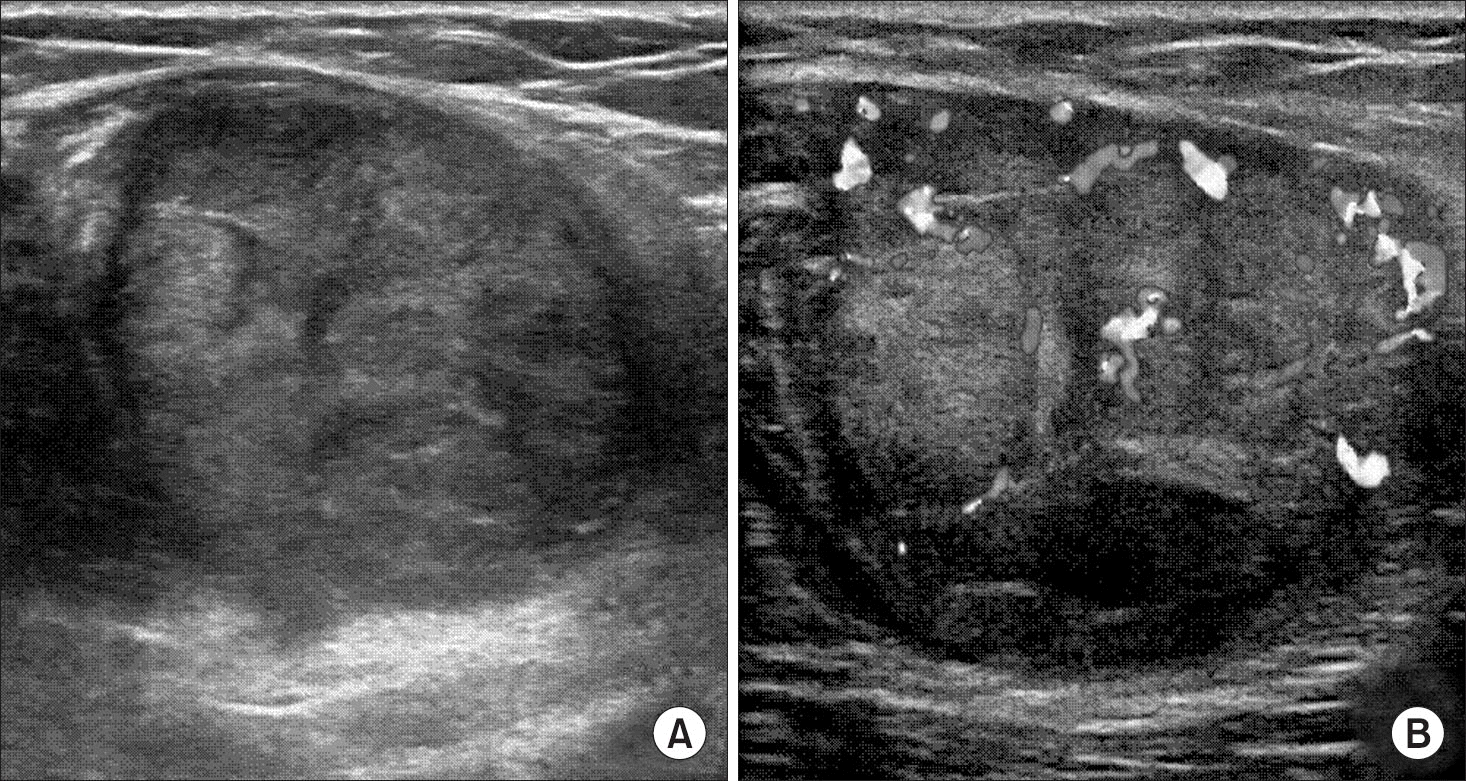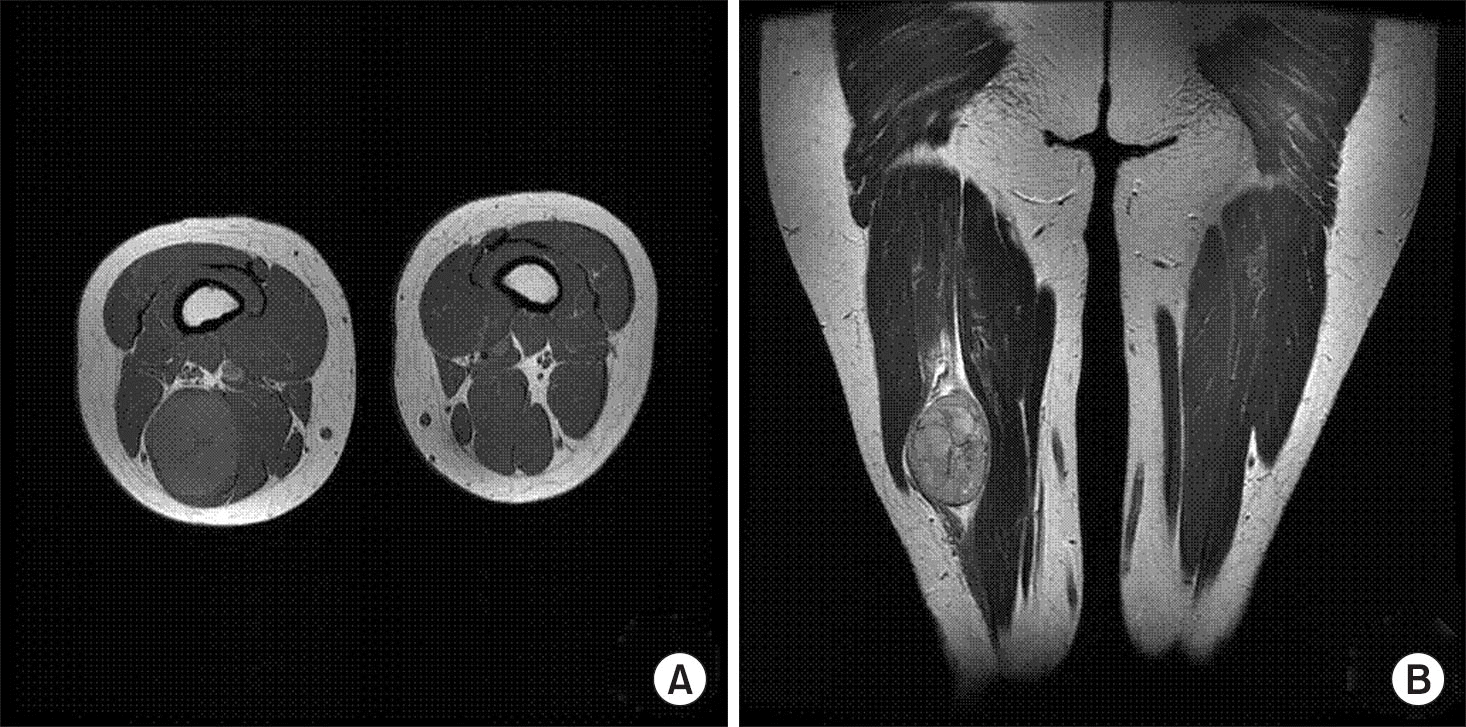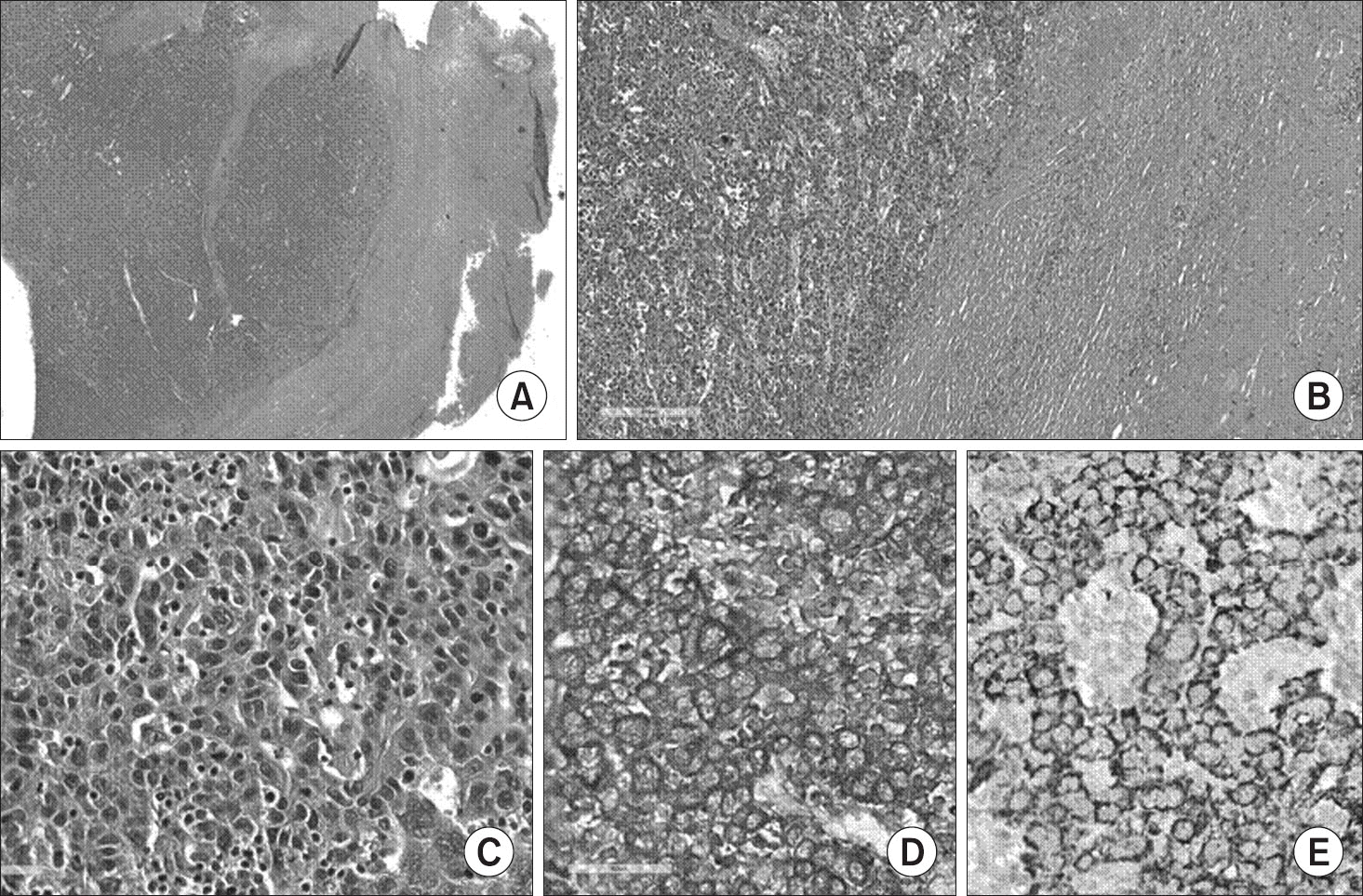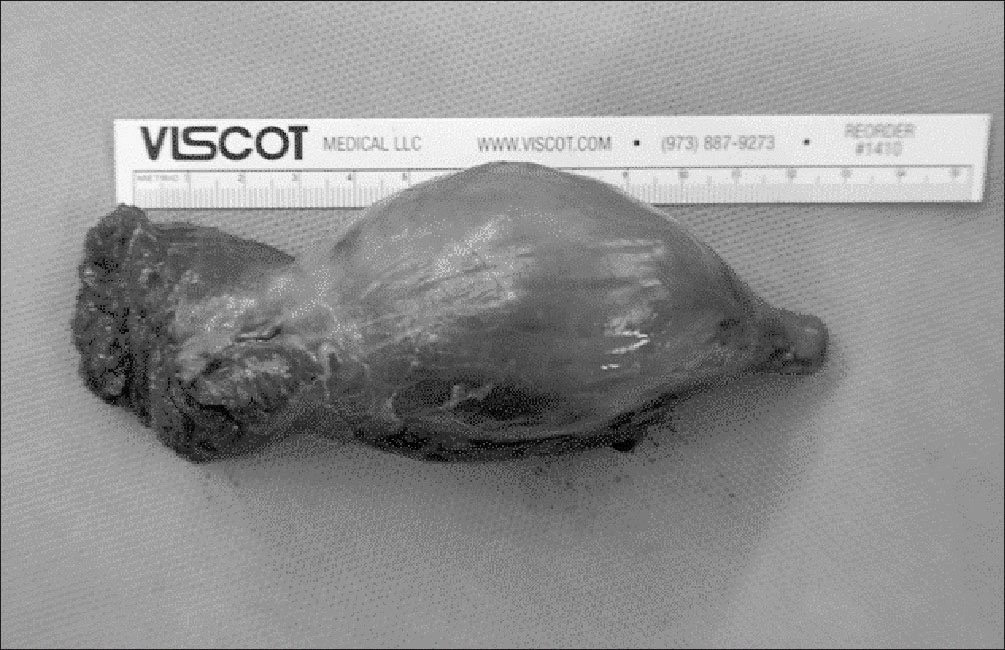Abstract
Hepatocellular carcinoma is one of the most common cancers worldwide. Extrahepatic metastasis commonly occur in the lung, lymph, nodes, bone, and adrenal glands. On the other hand, a metastasis of hepatocellular carcinoma to the skeletal muscle is rare. A 42-year-old woman presented for evaluation of a palpable mass with tenderness in her right thigh area. She has been diagnosed with hepatocellular carcinoma and pulmonary metastasis seven years ago and has received treatment. We performed incisional biopsy with suspicion of hepatocellular carcinoma metastasis from imaging studies and blood test results. The patient was finally diagnosed with metastasis of hepatocellular carcinoma in the semimembranosus muscle and treated by extensive resection. We report this case with a review of the relevant literature.
References
1. Ferlay J, Shin HR, Bray F, Forman D, Mathers C, Parkin DM. Estimates of worldwide burden of cancer in 2008: GLOBOCAN 2008. Int J Cancer. 2010. 127:2893–917.

2. Katyal S, Oliver JH 3rd, Peterson MS, Ferris JV, Carr BS, Baron RL. Extrahepatic metastases of hepatocellular carcinoma. Radiology. 2000. 216:698–703.

3. Uchino K, Tateishi R, Shiina S. . Hepatocellular carcinoma with extrahepatic metastasis: clinical features and prognostic factors. Cancer. 2011. 117:4475–83.
4. Attili VS, Babu KG, Lokanatha D, Bapsy PP, Ramachandra C, Rajshekar H. Bone metastasis in hepatocellular carcinoma: need for reappraisal of treatment. J Cancer Res Ther. 2008. 4:93–4.

5. Fukutomi M, Yokota M, Chuman H. . Increased incidence of bone metastases in hepatocellular carcinoma. Eur J Gastroenterol Hepatol. 2001. 13:1083–8.

6. Seely S. Possible reasons for the high resistance of muscle to cancer. Med Hypotheses. 1980. 6:133–7.

7. Luo C, Jiang Y, Liu Y. [Preliminary study on skeletal muscle derived tumor suppressor]. Chin J Oncol. 2001. 23::17-20. Chinese..
Figure 1.
(A) Ultrasonography image shows a well-defined, heterogeneous echoic mass, located in the semimembranosus muscle. (B) Doppler image shows marked hypervascularity with the tumor.

Figure 2.
(A) Axial T1-weighted magnetic resonance imaging (MRI) shows a lobulated soft tissue mass of slightly high signal intensity within the semimembranosus muscle. (B) Coronal T2-weighted MRI shows a heterogeneous signal intense mass, which was not observed to communicate with the other muscle or soft tissue.

Figure 3.
Microscopic findings of metastatic hepatocellular carcinoma in semimembranosus muscle tissue. (A, B) The broad sheets of hepatocellular carcinoma cells invade the skeletal muscle tissue (A: H&E, ×20, B: H&E, ×50). (C) Clusters of atypical hepatocytes (H&E, ×200). (D) The tumor cells show diffuse immunoreactivity for a-fetoprotein (AFP) (immunohistochemistry for AFP, ×200). (E) Immunohistochemical staining for the hepatocyte-specific antigen was positive (immunohistochemistry for the hepatocyte-specific antigen, ×200).





 PDF
PDF ePub
ePub Citation
Citation Print
Print



 XML Download
XML Download